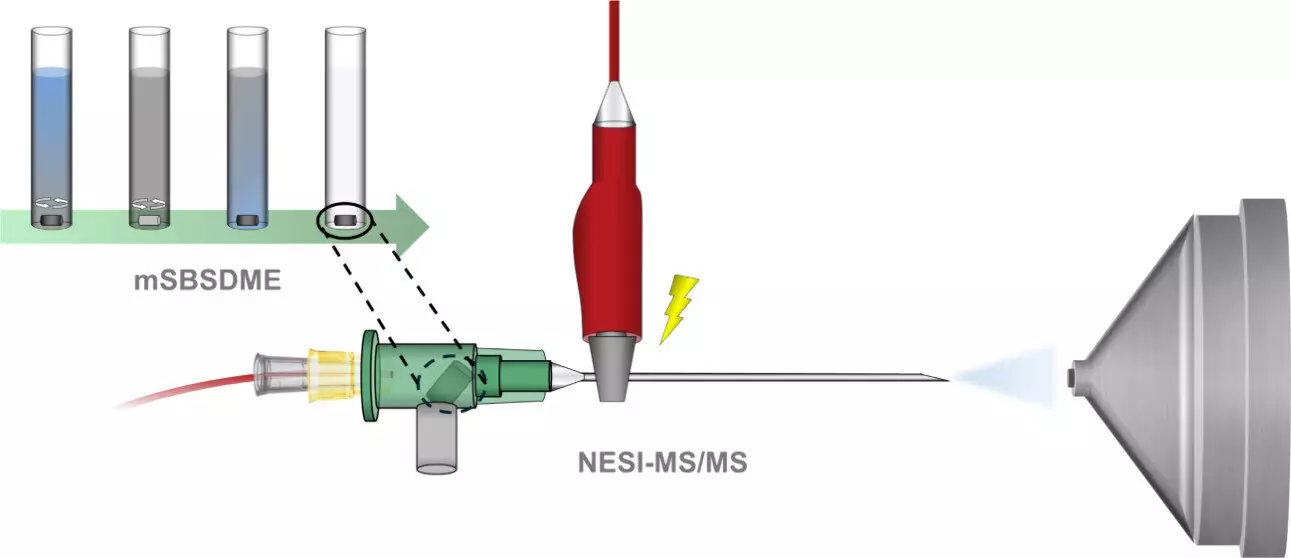In recent years, cannabis has become a focal point of discussion across Europe, particularly due to its growing popularity among the adult population. Approximately 8% of adults reported using cannabis in 2022, an alarming statistic that signifies not just a trend but a public health concern. As society grapples with the complex implications of widespread cannabis use, the need for effective monitoring and regulation becomes increasingly evident. The health risks associated with cannabis consumption—ranging from impaired cognitive function to potential addiction—underscore the necessity for reliable testing methods that can help mitigate these dangers.
A Groundbreaking Testing Technique
A team of researchers from the University of Cordoba and the University of Valencia has made a remarkable stride in addressing this problem. Their recently published work in the journal *Analytical Chemistry* introduces an innovative technique that detects THC (Tetrahydrocannabinol), the psychoactive component of cannabis, through a simple saliva sample. In a world where drug testing typically relies on more invasive methods like blood or urine tests, this new method is not only a breath of fresh air but a transformative leap toward non-invasive drug screening.
What sets this testing method apart is its efficiency; it requires only 0.25 mL of saliva, an amount remarkably smaller than traditional samples. This minimalistic approach aims to encourage more regular screening, potentially acting as a deterrent for casual cannabis users who might otherwise be indifferent to their consumption.
Two-Step Protocol for Simplicity and Speed
The researchers employed a two-step protocol, a significant simplification from the prior five-step processes commonly used. Jaime Millán Santiago, a researcher at the University of Cordoba, explains how this is achieved through dispersive microextraction using a miniaturized stirrer bar. In layman’s terms, this technique draws THC from saliva by creating a vortex using magnetic agitation. The magnetic properties of specific materials enable the THC molecules to be extracted quickly and effectively, streamlining the analysis process.
Once the THC is extracted, the sample is prepared for a mass spectrometry analysis via a stainless steel needle, which illustrates both ingenuity and cost-effectiveness. It’s a system that harnesses readily available materials while ensuring high performance, which speaks to both the environmental and economic sustainability of this method.
Detection Sensitivity and Real-World Implications
What’s particularly impressive is the sensitivity, precision, and accuracy of this technique. Being able to analyze cannabis concentration in minutes represents a profound leap in drug testing capabilities, especially in scenarios where quick results are crucial, such as in roadside checks or workplace tests. Professor Rafael Lucena noted that this innovation could soon be integrated into routine laboratory methods, making it an invaluable tool for health professionals, law enforcement, and regulatory agencies.
The implications of this advance reach far beyond the academic realm; they expand into societal impacts. With a method that is less invasive and more accessible, individuals might be more willing to participate in testing, ultimately promoting responsible use. Fast detection can also help public health officials assess the extent of cannabis use effectively and implement strategies to counteract its adverse effects.
A New Chapter in Cannabis Regulation
This breakthrough hints at a potential shift in how cannabis is viewed from a regulatory standpoint. Increased monitoring, coupled with accessible testing, could facilitate informed discussions surrounding cannabis legislation. As different countries navigate their cannabis policies, tools like this testing method may furnish evidence-based data that can guide public policy.
Moreover, the method represents a broader trend where innovation can address public health challenges. It not only opens the door for advancements in the realm of drug testing but also showcases the power of academic collaboration. The combined expertise of the two universities demonstrates how interdisciplinary collaboration can lead to groundbreaking solutions that benefit society at large.
The enhanced detection of THC through saliva represents a monumental step forward in drug testing technology. As cannabis use becomes more prevalent, tools like this are invaluable for ensuring public health and safety, dispelling the stigma associated with drug screening, and fostering a culture of accountability and responsibility. The ramifications of this research will be felt not just in laboratories but in communities across Europe, potentially paving the way for more informed approaches to cannabis use and policy.

